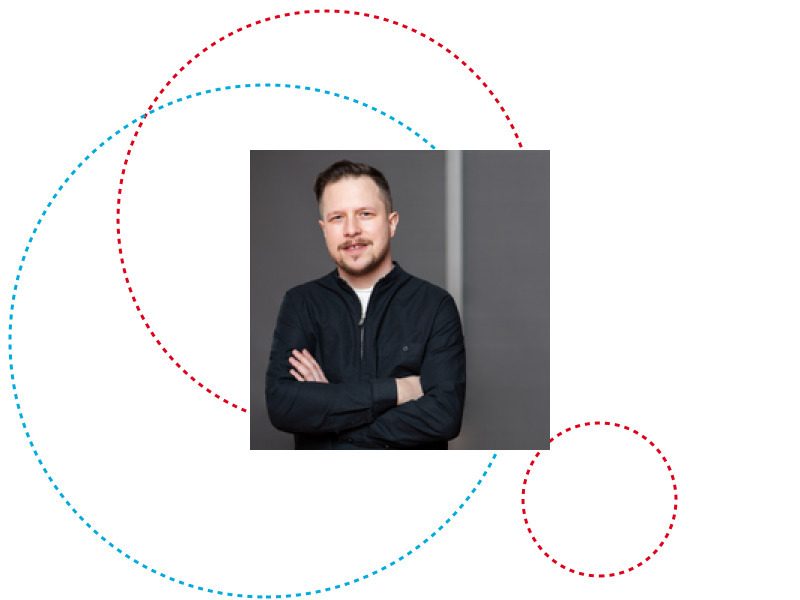As we are all too familiar, in the space of just one or two years, everything can change. To survive and thrive in a fast-paced and small society like Luxembourg, keeping up with (and predicting) the latest trends in developing technologies is a necessity. For SnT, advancing knowledge and injecting high quality technology into the market are two very important goals, and their Technology Transfer Office (TTO) is helping them to achieve just that.
“We started to think about what we can do to help researchers take their excellent research results and turn them into products and services that are commercially viable,” says Jacek Plucinski, spin-off coach and technology transfer officer at SnT, as he describes the inception of the Acceleration Programme he manages. Launched in 2019, the programme aims to bridge the gap between research and industry by educating researchers on local and international markets, their competitors, and what it takes to form a successful startup based on deep tech research. Having moved to SnT in 2018, Plucinski’s experience in startups spans more than 10 years. From managing a company specialised in tracking customer movement using image recognition in studying the efficiency of retail floor plans, to joining a TTO that worked closely with research centres to develop technologies assist with disabilities; his experience has allowed him a valuable insight into what makes a viable business idea.
The Acceleration Programme
His first thought of an Acceleration Programme at SnT came as he ran IP clearance checks to see if a technology was eligible for the Luxembourg National Research Fund (FNR) JUMP programme. His previous experience in startups made him curious as to how the TTO could help potential candidates prepare for the FNR call and close the gap between research and business. With the help of Carlo Duprel, head of the TTO, they organised the very first edition. “Candidates who have a desire to market their ideas attend training sessions to prepare themselves, and then they pitch their idea to an external panel,” he explains. “The panel will select the candidates whose projects stand out and have the great potential of managing a venture project and providing a solution tailored to a real-world problem.”
If a candidate is selected, we then work closely with them to apply for funding. The Acceleration Programme leverages the use of FNR JUMP – a competitive funding programme available to research institutions to support the researchers on the road-to-market with a technology that has the potential to be launched commercially. “Once the candidate is chosen, it’s a short four to six months to prepare to meet the JUMP call requirements. However, we’ll continue to work with them over the course of 18-24 months to help give them the support they need to succeed,” shares Plucinski. He also insisted the importance of team building, with mentors who have both a technical and business driven mindset. “During this time, the TTO helps a candidate to team up with people with different areas of expertise – including intellectual property (IP), legal, business development, and marketing. We have also partnered with business incubator Technoport, among others from the local entrepreneurial landscape, to bring researchers into a business environment, get them out of their comfort zones and help them think like an entrepreneur,” he continues. With Technoport’s vast experience as a business accelerator, their goal is to promote and support innovative and technology-oriented companies. The company is able to broaden the skills of SnT researchers and help them develop an entrepreneurial spirit.
A Viable Product Concept
In order to receive funding, the candidate has to submit a project proposal, first internally to the TTO, to eventually prepare the best possible Proof of Concept (PoC) proposal to the FNR JUMP call. Once a team is assembled to make this happen, they need to assess the market, find partners, create a business plan and prepare a minimum viable product, along with the protected IP. The TTO ensures IP monitoring and patenting where applicable, through the whole duration of the programme. If the funding is provided and the idea is viable, later down the line, a spin-off company can be potentially launched. “What we’re seeking are investable solutions, so at the very end of the programme we can reach out and pitch to potential investors”.
Once this stage has concluded and a first minimum viable product has been produced, we then have a more accurate idea as to whether the project could be launched as a spin-off. To date, SnT has launched six spin-off companies across varying domains – including its most recent – digitalUs. The TTO has put in place a number of steps to help the researcher launch their final product or service on the market. The lead of the spin-off will work closely with the TTO in the fields of IP licensing and cross promotion. The potential spin-off will also be assisted in obtaining additional funding, and collaborate with other industry companies in the framework of SnT’s Partnership Programme. Early-stage support such as this for researchers pays dividends for their future success, as two other projects from a previous edition of the Acceleration Programme have just received FNR funding.
“To succeed, the idea needs to be something that isn’t trivial or easy to replicate. It also requires a strong personal motivation to succeed, as business ownership is by no means a walk in the park. But, at the end of the day, if we’re not in a position to launch a spin-off, that person comes away equipped with skills that will, without a doubt, be helpful for them in their future career.”
The 2021 edition of the Acceleration Programme kicked off at the end of September with their first training session, and researchers had the opportunity to pitch their ideas on Friday 15 October. The TTO has since selected two projects for further support.
